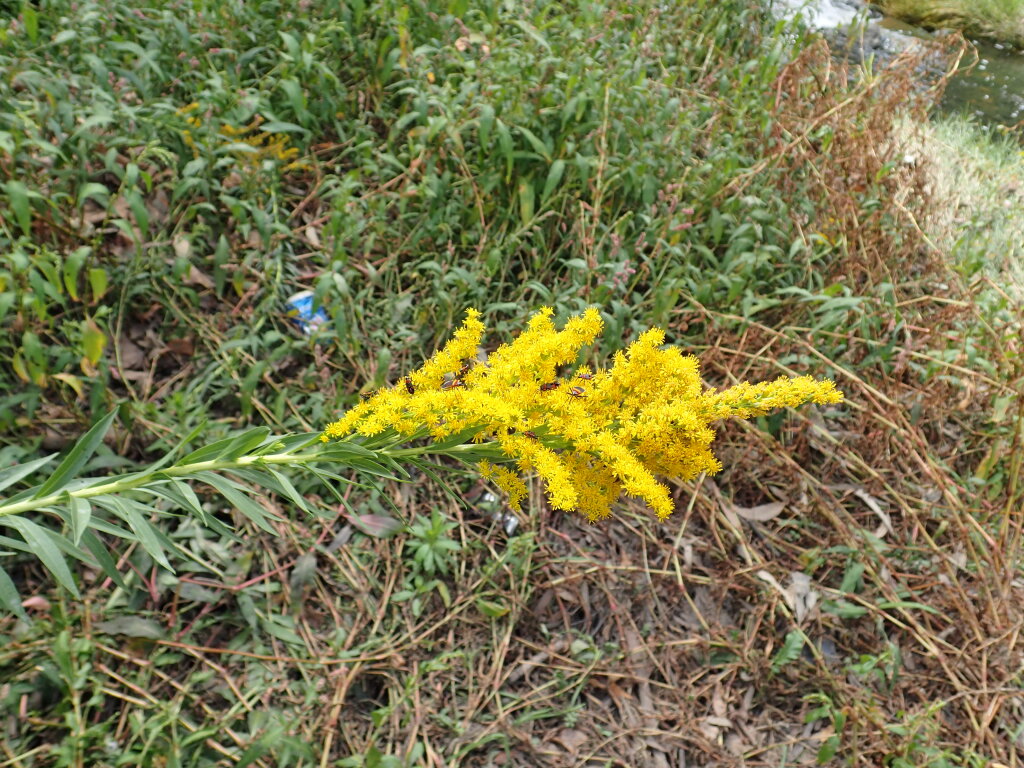Solidago chilensis
Meyen Brazilian ArnicaErect, strongly rhizomatous perennial herb to 2 m high; stems glabrous throughout or somewhat hairy within the inflorescence. Leaves lanceolate to oblanceolate, (2–)4–9(–12) cm long, (2–)5–15(–20) mm wide, glabrous, at least the mid-stem leaves 3-nerved from near base and with a few small teeth, base attenuate to the short, slightly winged petiole, apex acute, upper leaves smaller than mid-stem leaves and generally entire, basal leaves generally shed before flowering. Inflorescences paniculate, secund, pyramidal or clavate; capitula 20–500; peduncle glabrous or sparsely hairy; involucres 3–7 mm long; involucral bracts lanceolate, unequal, margins ciliate, acute; ray florets 8–17, yellow; disc florets 10–22, c. 3 mm long; cypselas obconic, 1.1–1.5 mm long, moderately strigose; pappus c. 4 mm long. Flowers autumn
VVP, MuF, GipP, HSF. Also naturalised WA. From scattered sites in Victoria (e.g. Inverloch, Glen Iris, Kew, Dandenong Ranges, Echuca). Native to South America (Bolivia, Brazil, Chile, Paraguay, Uruguay). Along roadsides, in coastal scrub and along waterways.
Victorian occurrences of this species have been identified in the past as the similar, North American Solidago sempervirens L. (Semple et al. 2017).
 Spinning
SpinningMisapplications
Semple, J.C.; Lopez Laphitz, R.; Uesugi, A.; Coffey, S.C.; Walsh, N.G. (2017). Multivariate morphometric confirmation of Solidago chilensis (Asteraceae: Astereae) in Australia. Phytoneuron 42: 1–10.

